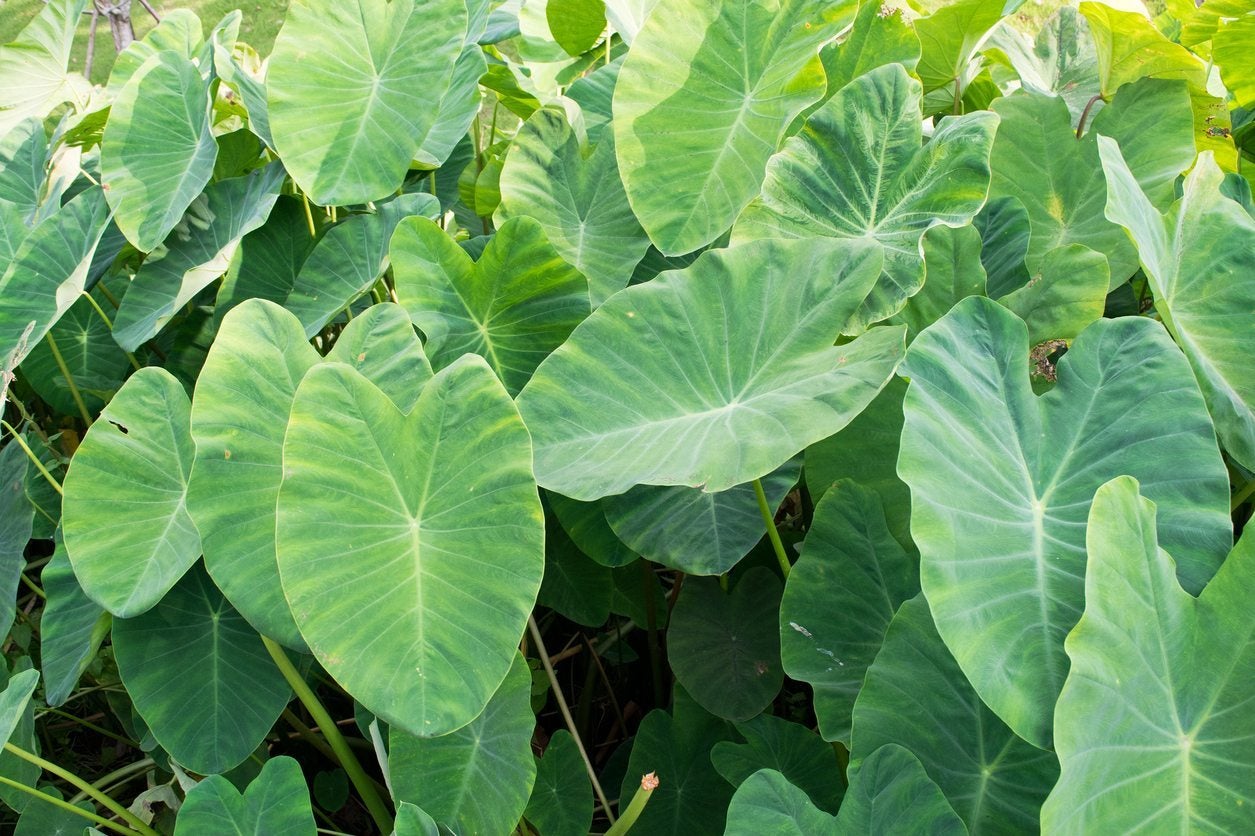Elephant Ear Plant Disease In Gardens: How To Treat Sick Elephant Ears


One of the most widely grown food crops is an elephant ear. This is known as taro, but there are numerous varieties of the plant, Colocasia, many of which are simply ornamental. Elephant ears are often grown for their huge, robust foliage. The leaves are prone to several diseases which mar this ornamental appeal. There are also diseases of elephant ear that can cause crown and root rot. If your plant has any of the following elephant ear disease symptoms, you may have a diseased Colocasia. Read further to find out how to handle elephant ear plant disease.
How to Spot Diseased Elephant Ear Plants
If you have a Colocasia, you probably know that they are not at all frost tolerant, require regular, even water and a full sun location. These large-leaved plants can grow quite quickly and their production of leaves is prolific. Although they need plenty of water, they can develop problems in standing water or if they are allowed to dry out for long periods of time. Diseased elephant ear plants may be suffering from cultural problems or they may actually have a pathogen or insect issue. You may always know when your children are ailing, but sometimes it can be difficult to see if a plant is feeling poorly until it is too late. Many signs that it isn't feeling well will be showing on the leaves. For instance:
- Stunted leaves may indicate a lack of a macro-nutrient.
- Pale leaves may indicate a micronutrient deficiency.
- Speckled or stippled leaves that are deformed can indicate spider mite damage.
- Wilting or curling of leaves are indications of too little water.
- Soft spots in the stems or roots can point to too much water.
Deciphering elephant ear disease symptoms can be confusing but just start with the most obvious cultural conditions and if those are not the problem, move on to possible fungal, viral or bacterial issues.
Diseases of Elephant Ear
The most common elephant ear plant disease is fungal leaf blight. It produces tiny round lesions on the ornamental leaves that may ooze fluid and turn purple or yellow when dry. When the fungus is in full bloom, there is also fuzzy growth. Over time the entire leaf collapses on itself and the disease travels down the corm. Phyllosticta leaf spot is another very common problem in elephant ears. It is not life threatening but does mar the leaf appearance with numerous holes. Each starts as a brown lesion that then dries up and falls out of the leaf. Tiny black fruiting bodies are also observed. Pythium rot can cause plants to die. It is most common in areas with too much water and humidity.
How to Treat Sick Elephant Ears
Fungal diseases respond well to a foliar application of copper fungicide. Spray on plants when they are at least 4 weeks old and apply weekly in rainy weather and bi-weekly in drier periods. Avoid overhead watering to prevent consistently wet leaves. To prevent Pythium rot, use good sanitation practices and use pure irrigation water. Once plants are infected, it is too late to save them. Seedlings are the ones that most often get the disease. Fortunately, this disease is most prevalent in regions where there is high humidity and extreme heat. Provide plenty of ventilation to indoor plants and be careful with watering to prevent any disease.
Sign up for the Gardening Know How newsletter today and receive a free copy of our e-book "How to Grow Delicious Tomatoes".

Bonnie Grant is a professional landscaper with a Certification in Urban Gardening. She has been gardening and writing for 15 years. A former professional chef, she has a passion for edible landscaping.